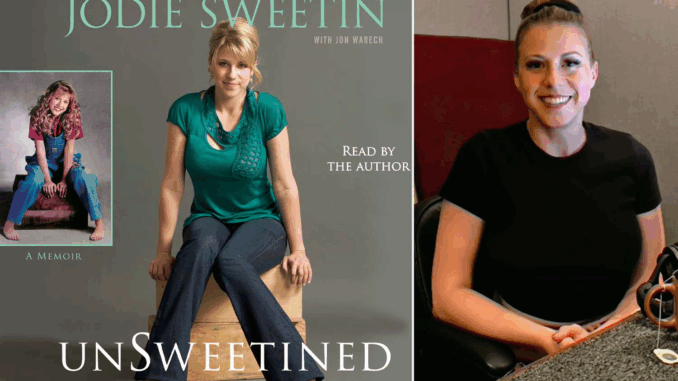
From Childhood Icons to Modern Adults
When Full House first aired, the Tanner family captured audiences’ hearts with relatable family dynamics and lovable characters. Decades later, Fuller House revived the franchise, showing fans how these characters grew, evolved, and navigated adulthood.
D.J. Tanner, Stephanie Tanner, Kimmy Gibbler, and other characters experienced both on-screen growth and personality development. Let’s explore their evolution from the original series through the sequel.
1. D.J. Tanner: From Girl Next Door to Single Mom
-
Originally the responsible middle child in Full House
-
Matured into a single mother of three in Fuller House
-
Balances work, family, and personal life with humor and resilience
D.J.’s character reflects real-life growth, resonating with audiences who watched her grow up.
2. Stephanie Tanner: From Tomboy to Music Teacher
-
In Full House: energetic, sassy, and occasionally rebellious
-
In Fuller House: professional, composed, yet still retains playful streak
-
Career as a music teacher highlights her maturity and responsibility
Stephanie’s evolution blends nostalgia with modern adult life.
3. Kimmy Gibbler: The Quirky Best Friend
-
Known for eccentric fashion and wacky antics in Full House
-
In Fuller House: balances comedic flair with adulthood challenges
-
Works professionally, navigates friendships, and even co-parents
Kimmy’s growth shows how a comic relief character can gain depth while keeping charm.
4. Tommy and Max Fuller: The New Generation
-
D.J.’s sons bring fresh dynamics to the show
-
Represent modern childhood experiences
-
Their interactions with classic characters provide humor and nostalgia
The new generation bridges the original series with contemporary storytelling.
5. Ramona Gibbler: Kimmy’s Sister
-
Introduced as an antagonist and comic foil
-
Grows into a more complex, relatable character
-
Shows how supporting characters can evolve with storylines
6. On-Screen Friendships: Evolution Over Time
-
Original friendships maintained while introducing new bonds
-
Relationships deepen as characters mature
-
Provides emotional continuity for fans
7. Romantic Relationships and Growth
-
D.J. navigates love and dating as a single mom
-
Stephanie faces adult relationships with maturity
-
Kimmy explores love and personal growth while balancing comedic antics
8. Fashion and Style Evolution
-
D.J.: from casual teenage wardrobe to modern professional attire
-
Stephanie: playful yet professional clothing reflecting career and personality
-
Kimmy: retains quirky fashion, updated for modern trends
Fashion changes mirror character maturity and personality evolution.
9. Personality Development
-
D.J.: responsible, empathetic, and resilient
-
Stephanie: confident, caring, with humor intact
-
Kimmy: eccentric, loyal, yet more self-aware
Personality growth balances nostalgia with realism.
10. Emotional Growth
-
Characters confront adult challenges: parenting, career, relationships
-
Storylines tackle real-life issues while maintaining humor
-
Emotional depth makes characters more relatable
11. Role Reversals and Growth
-
Characters face new roles: D.J. as a single mom, Kimmy as co-parent, Stephanie in a career-focused life
-
Allows exploration of responsibility and independence
-
Provides fresh storylines while honoring original personalities
12. Humor Evolution
-
Original slapstick and situational comedy updated for modern sensibilities
-
Characters retain signature humor while incorporating witty, adult jokes
-
Comedy reflects both character growth and audience expectations
13. Family Dynamics Across Generations
-
Multi-generational interactions: kids, parents, and friends
-
Highlights evolving family roles and responsibilities
-
Maintains central family theme of love and support
14. Challenges of Character Continuity
-
Writers balanced old storylines with new character growth
-
Ensured consistency with established personality traits
-
Avoided breaking nostalgia while creating believable evolution
15. Cultural and Social Adaptation
-
Characters reflect changing societal norms
-
Storylines address modern parenting, technology, and social issues
-
Evolution maintains relevance for contemporary audiences
16. Legacy and Fan Connection
-
Fans appreciate seeing familiar characters grow up
-
Emotional attachment strengthened by realistic character arcs
-
Evolution reinforces the timelessness of the Tanner family
Conclusion
The evolution of D.J. Tanner, Stephanie, Kimmy, and other characters in Fuller House demonstrates thoughtful storytelling that respects the original series while exploring adulthood, responsibility, and personal growth. From childhood innocence to modern maturity, these characters evolved naturally, making them relatable to both longtime fans and new viewers. Their journeys remind us that even sitcom characters can grow alongside their audience, creating a legacy that spans generations.
FAQs
1. How has D.J. Tanner’s character changed in Fuller House?
She matured from a responsible teenager into a single mother balancing family and career.
2. Did Stephanie Tanner maintain her personality traits?
Yes, she retained her humor and sass while evolving into a confident and responsible adult.
3. How did Kimmy Gibbler evolve?
Kimmy retained her eccentric personality but became more self-aware and responsible, especially as a co-parent.
4. Are there new characters in Fuller House?
Yes, D.J.’s children and Kimmy’s sister Ramona introduce new dynamics and modern perspectives.
5. How does the show balance nostalgia with character growth?
By maintaining signature traits, humor, and relationships while addressing adult challenges and modern storylines.
